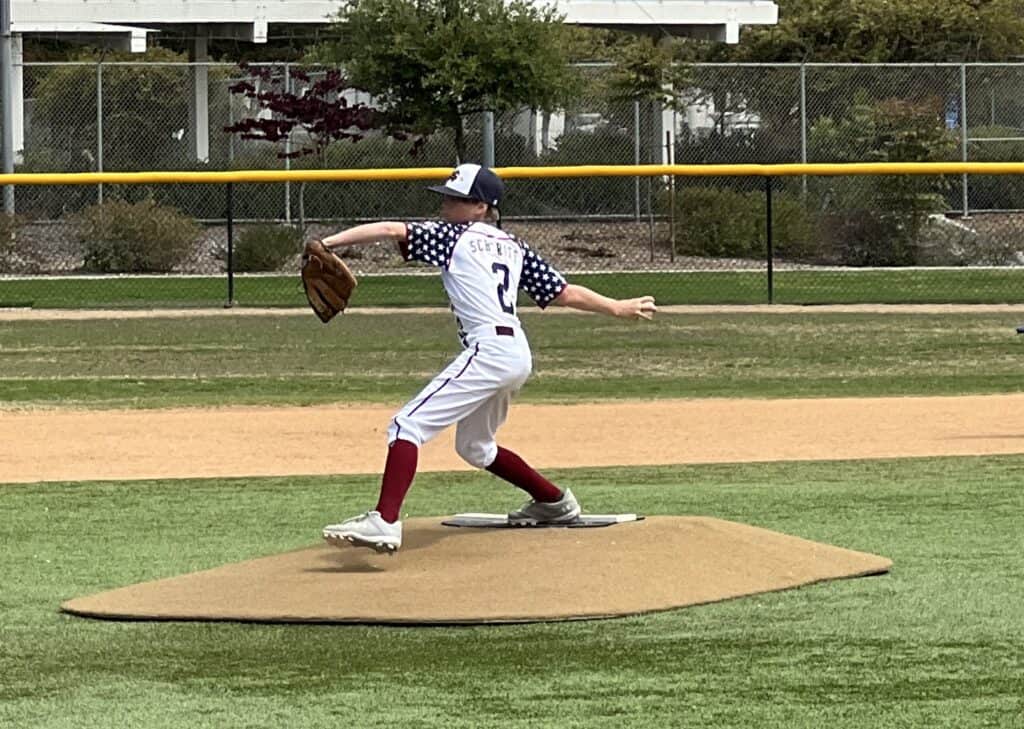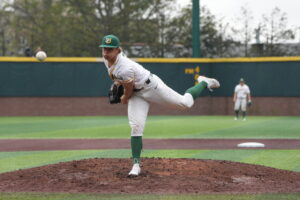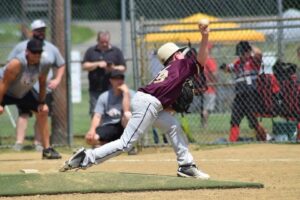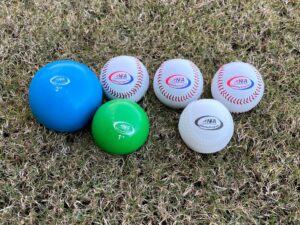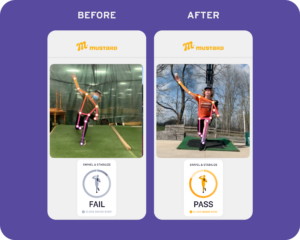By Gardy O’Flynn, NPA East Area Director, with Lindsay Berra
Your Glove and the Swivel & Stabilize Variable
During Swivel and Stabilize, the athlete firms the glove over the front foot, inside the width of the torso, tracking the chest to the glove. This is efficient for the athlete’s delivery, but also puts the athlete in the proper fielding position to make plays on balls coming back up the middle. So, stabilizing the glove over the front foot is not only efficient mechanically, it’s also important for safety and protection. Knowing where the glove is at release point is vital, and you can clearly see the Swivel & Stabilize variable in the Mustard app. Choosing a glove that is appropriate for your youth athlete will help him or her to master this variable of the pitching delivery.
A Glove that is Too Big is Inefficient
Little Leaguers often get hand-me-down gloves from older siblings, or they get big, expensive gloves from parents who want them to have the best equipment. Bigger gloves can weigh close to two pounds. The average human arm weighs 5.7% of body weight, so for an 80-pound Little Leaguer, that’s 4.5 pounds. So, that’s a 4.5-pound arm, plus a two-pound glove, all moving away from the athlete’s front foot and away from the target line. When energy is moving, it compounds and that makes it even harder to stabilize that glove, and you’ll see right-handed pitchers getting pulled off to the first base side, and lefties getting pulled toward third. Inappropriate head movement can cause issues with both velocity and control. In order to combat this, we want athletes to choose a lighter, smaller glove that they can handle and control so they can properly firm it up over that front foot.
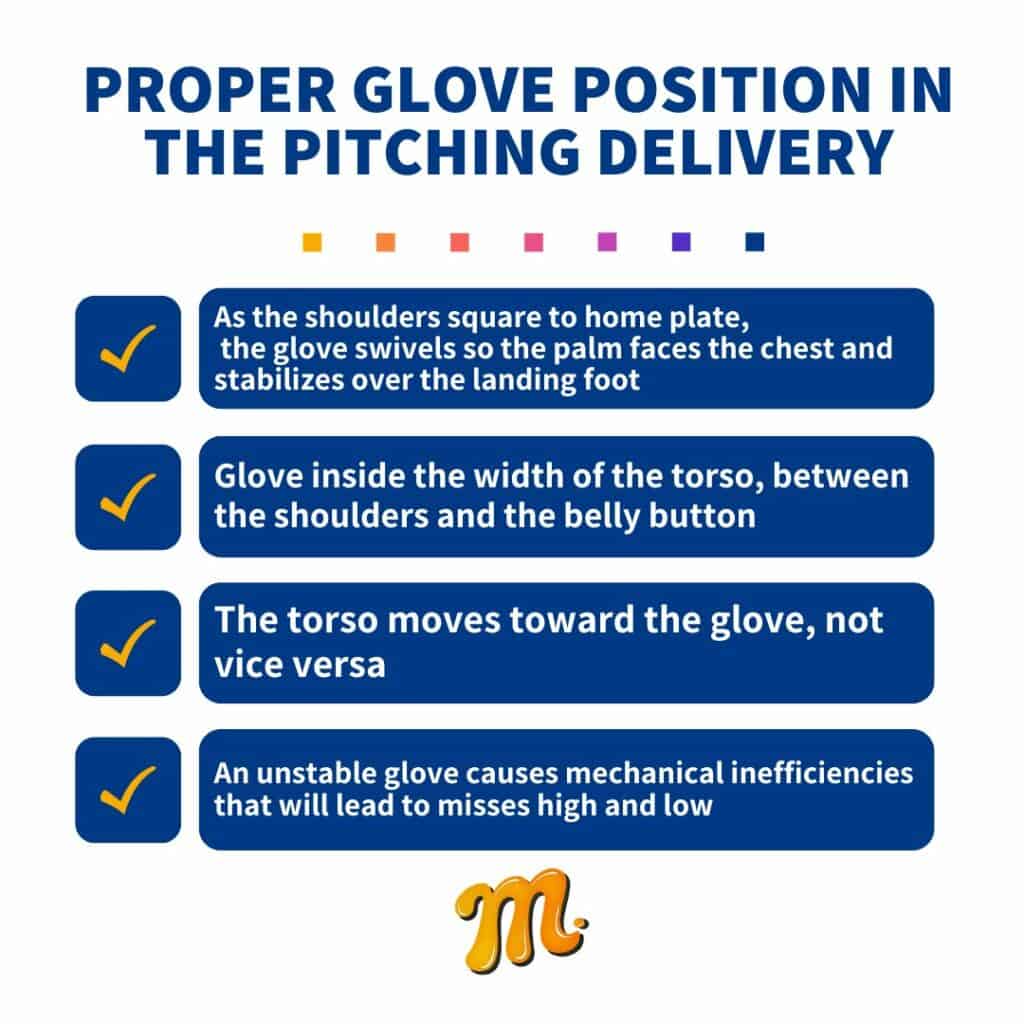
Infield Gloves are Usually a Good Choice
I often see young pitchers at our clinics with huge outfield gloves that they can’t even hold up. Pitchers, however, become infielders as soon as the ball is released. They have to field ground balls, make quick plays and be able to get the ball out of the glove quickly, so for a middle school-aged athlete, an infield glove that’s shorter with a shallower pocket is a much better choice. A glove that is an inch or an inch and a half smaller could be a half a pound lighter, which goes a long way as far as the athlete’s ability to firm it up over their front foot, and for them to be ready for that ball coming back up the middle. For the very little guys, a cheaper, plastic glove or a toddler-type glove is OK. There are no sponsorship deals at that age, so when choosing a glove, the athlete should think only about whatever glove is safest and most efficient.
For some perspective, Clayton Kershaw’s Wilson A2000 CK22, which is named after him, is 11.75 inches. Kershaw is 6-4 and 225 pounds. So, an 80-lb 8-year-old probably doesn’t need a glove that big.
If You Have Multiple Gloves, Choose the Smallest to Pitch
Many kids, as they get older, will have specific gloves for each position they play. So, they may be comfortable with an outfield glove, but it’s still better to choose a smaller, more manageable infield glove to pitch so it’s easier to more efficiently firm up the front side.
Ease Up on the Glove Oil
I see so many parents who watch YouTube videos on how to break in a glove. They lather it up with conditioner or oil without realizing how much weight it adds to the glove. You end up with a glove that just feels like a lead weight for a young athlete.
The Extra Squeeze is Everything
Being able to understand the feeling of squeezing the glove and learning how to do it helps to stop the energy over the athlete’s front foot and stabilize it so the body can track forward while the ball is being released. To practice this, we’ll often put a one-pound ball, or a baseball or a softball, into an athlete’s glove for them to squeeze during the delivery so they can learn the feeling of firming the front side. If an athlete’s glove is already too heavy, you won’t be able to do this. But if the glove is on the lighter side, there’s more room to actually put an implement of some sort in there and have it not weigh five pounds. Keep this in mind when choosing a glove!
If you’d like more great content from Mustard, and you’d like to evaluate and improve your own pitching mechanics, download the Mustard pitching app today.

